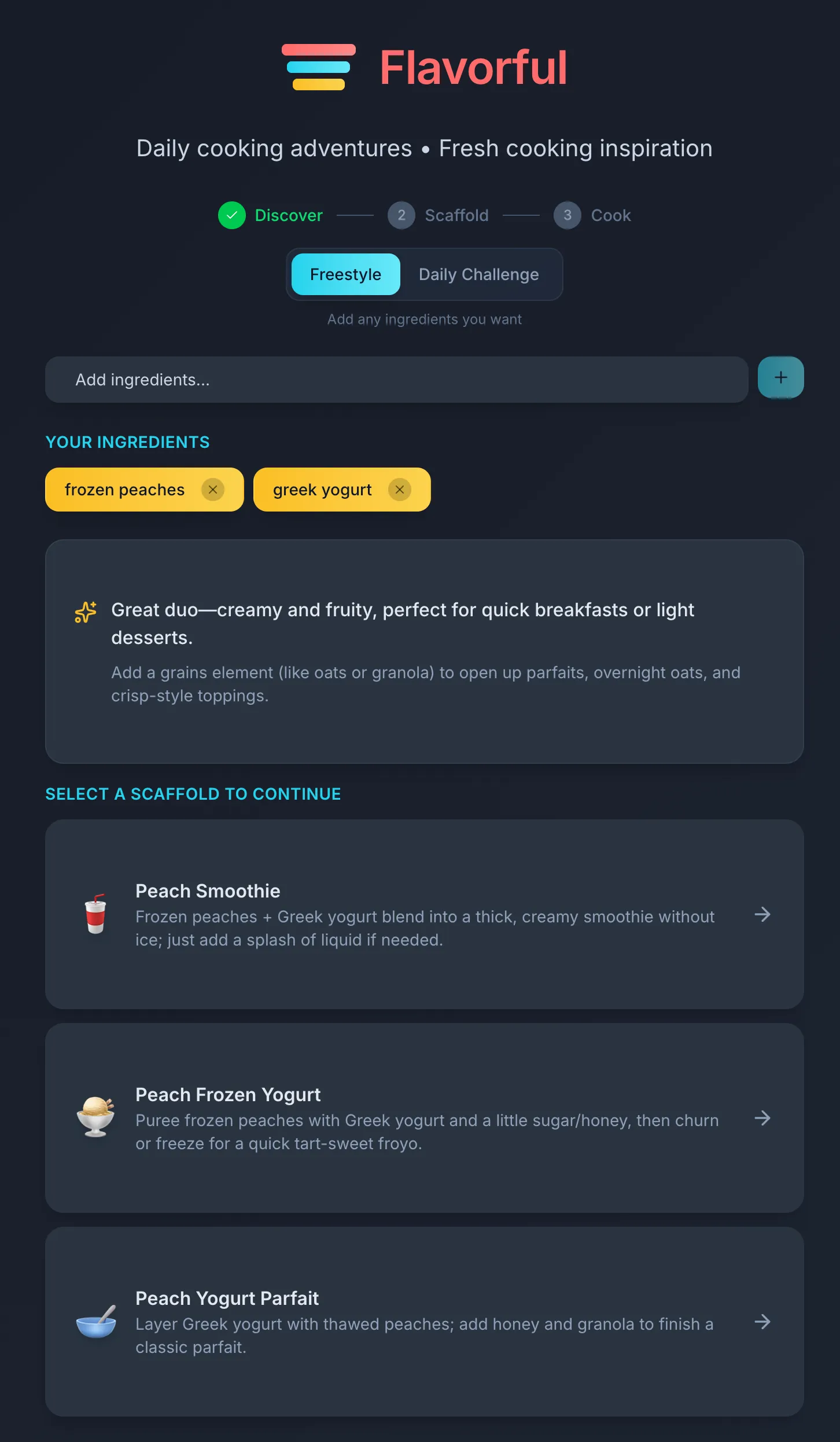Despite having access to every ingredient, every recipe, and infinite inspiration, most home cooks still stand in the kitchen paralyzed by possibility or stuck in a rut.
Flavorful makes the space between ingredients and recipes visible – the space where improvisation happens.
You can start with what you have – let's say miso and cream. Flavorful suggests some directions – Miso Alfredo, Miso Butterscotch Sauce, Miso Mashed Potatoes. You pick one, then adjust: add mushrooms from your fridge, swap shallots for garlic, finish with whatever cheese you have. The framework guides you but doesn't constrain you. That's the scaffold.
The Daily Challenge lets you explore combinations of ingredients around a theme, like Comfort Zone. Choose from pasta, butter, cream, garlic, chicken, parmesan, peas, and miso and see where you can go. No pressure to actually cook it, just play.
We're testing Flavorful with a small group of home cooks right now – email me at hal@robotonwheels.com for access!
